The global thermal scanners market is expected to grow from USD 4.1 billion in 2019 to USD 7.3 billion by 2027, at a CAGR of 8.6% during the forecast period 2020-2027.
Thermal scanners are a high tech detection devices that are able to detect infrared radiation, or heat energy, and project the temperature distribution of the object onto a digital screen using the principles of the photovoltaic effect and signal processing. All objects can be detected by thermal scanners as long as their temperature is above absolute zero or -273 ° C. Currently, this device is seeing heavy usage in detecting fevers, a symptom of Covid-19.
This study delivers a comprehensive analysis of types, technology, wavelength, end-user, applications, and regions. The type segment includes portable and fixed. The fixed segment held the largest market share in 2019 due to its use in various industrial as well as commercial sectors. The worldwide outbreak of the novel coronavirus has heavily boosted demand for fixed thermal scanners in places like airports and commercial buildings. The technology segment consists of cooled and uncooled. In 2019, the uncooled segment held the largest share because of benefits like low maintenance, long life and better performance in adverse environmental conditions. On the basis of wavelength, the market has been divided into long-wave, mid-wave, and short-wave. The long wave segment held the larger share of the market in 2019 owing to various industrial applications. Based on end-user, the market has been segmented into aerospace & defence, automotive, oil & gas, industrial, commercial, healthcare & life sciences, and others. Aerospace & defence held the largest market share in 2019 because of various military applications in guidance systems, surveillance and weapons system targeting using thermal imaging. The applications segment includes security & surveillance, search & rescue, thermography, and others. The thermography segment is forecasted to have the highest growth due to its temperature scanning applications in detecting fever, a symptom of the novel coronavirus.
The market has been divided into North America, Europe, Asia-Pacific, Middle East & Africa, and South America. The Asia-Pacific region stands as a promising market for thermal scanners and is anticipated to grow at a high CAGR during the forecast period. The installation of thermal scanners for at airports to detect Covid-19 infections among travellers is a driving factor for the APAC region as well as the world. North America holds the largest market share owing to surveillance and security applications regarding numerous commercial and historic, culturally significant buildings like museums and monuments.
Some of the notable players in the thermal scanners market Opgal, Seek Thermal, Leonardo S.p.A., Axis Communications AB, Tonbo Imaging, C-THERMAL, Infratec GmbH, Terabee, AMETEK Land, HGH Infrared Systems, Fluke Corporation, VUMII Imaging, Optotherm, Inc., L3harris Technologies, Inc., FLIR Systems, Inc., Thermoteknix Systems Ltd., Xenics, Testo SE & Co. KGaA, Cox, HGH Infrared Systems, and 3M Scott among others. The key players are now concentrating on implementing strategies such as adopting new technology, product innovations, mergers & acquisitions, joint venture, alliances, and partnerships to improve their market position in the global thermal scanners industry.
This study predicts revenue growth at global, national, and country levels from 2020 to 2027. Fior Markets has segmented the market based on below-mentioned segments:
Global Thermal Scanners Market Analysis And Forecast, By Type
Global Thermal Scanners Market Analysis And Forecast, By Technology
Global Thermal Scanners Market Analysis And Forecast, By Wavelength
Global Thermal Scanners Market Analysis And Forecast, By End-User
Global Thermal Scanners Market Analysis And Forecast, By Applications
Global Thermal Scanners Market Analysis And Forecast, By Regional Analysis
Report Description:
1. Introduction
1.1. Objectives of the Study
1.2. Market Definition
1.3. Research Scope
1.4. Currency
1.5. Key Target Audience
2. Research Methodology and Assumptions
3. Executive Summary
4. Premium Insights
4.1. Porter’s Five Forces Analysis
4.2. Value Chain Analysis
4.3. Top Investment Pockets
4.3.1. Market Attractiveness Analysis By Type
4.3.2. Market Attractiveness Analysis By Technology
4.3.3. Market Attractiveness Analysis By Wavelength
4.3.4. Market Attractiveness Analysis By Application
4.3.5. Market Attractiveness Analysis By End User
4.3.6. Market Attractiveness Analysis By Region
4.4. Industry Trends
5. Market Dynamics
5.1. Market Evaluation
5.2. Drivers
5.3. Restrains
5.4. Opportunities
5.5. Challenges
6. Global Thermal Scanners Market Analysis and Forecast, By Type
6.1. Segment Overview
6.2. Portable
6.3. Fixed
7. Global Thermal Scanners Market Analysis and Forecast, By Technology
7.1. Segment Overview
7.2. Cooled
7.3. Uncooled
8. Global Thermal Scanners Market Analysis and Forecast, By Wavelength
8.1. Segment Overview
8.2. Long-Wave
8.3. Mid-Wave
8.4. Short-Wave
9. Global Thermal Scanners Market Analysis and Forecast, By Application
9.1. Segment Overview
9.2. Security & Surveillance
9.3. Search & Rescue
9.4. Thermography
9.5. Others
10. Global Thermal Scanners Market Analysis and Forecast, By End User
10.1. Segment Overview
10.2. Aerospace &Defence
10.3. Automotive
10.4. Oil &Gas
10.5. Industrial
10.6. Commercial
10.7. Healthcare &Life Sciences
10.8. Others
11. Global Thermal Scanners Market Analysis and Forecast, By Regional Analysis
11.1. Segment Overview
11.2. North America
11.2.1. U.S.
11.2.2. Canada
11.2.3. Mexico
11.3. Europe
11.3.1. Germany
11.3.2. France
11.3.3. U.K.
11.3.4. Italy
11.3.5. Spain
11.4. Asia-Pacific
11.4.1. Japan
11.4.2. China
11.4.3. India
11.5. South America
11.5.1. Brazil
11.6. Middle East and Africa
11.6.1. UAE
11.6.2. South Africa
12. Global Thermal Scanners Market-Competitive Landscape
12.1. Overview
12.2. Market Share of Key Players in Global Thermal Scanners Market
12.2.1. Global Company Market Share
12.2.2. North America Company Market Share
12.2.3. Europe Company Market Share
12.2.4. APAC Company Market Share
12.3. Competitive Situations and Trends
12.3.1. Product Launches and Developments
12.3.2. Partnerships, Collaborations, and Agreements
12.3.3. Mergers & Acquisitions
12.3.4. Expansions
13. Company Profiles
13.1. GE Healthcare
13.1.1. Business Overview
13.1.2. Company Snapshot
13.1.3. Company Market Share Analysis
13.1.4. Company Product Portfolio
13.1.5. Recent Developments
13.1.6. SWOT Analysis
13.2. Heska Corporation
13.2.1. Business Overview
13.2.2. Company Snapshot
13.2.3. Company Market Share Analysis
13.2.4. Company Product Portfolio
13.2.5. Recent Developments
13.2.6. SWOT Analysis
13.3. Siemens AG
13.3.1. Business Overview
13.3.2. Company Snapshot
13.3.3. Company Market Share Analysis
13.3.4. Company Product Portfolio
13.3.5. Recent Developments
13.3.6. SWOT Analysis
13.4. FUJIFILM Holdings Corporation
13.4.1. Business Overview
13.4.2. Company Snapshot
13.4.3. Company Market Share Analysis
13.4.4. Company Product Portfolio
13.4.5. Recent Developments
13.4.6. SWOT Analysis
13.5. Esaote SpA
13.5.1. Business Overview
13.5.2. Company Snapshot
13.5.3. Company Market Share Analysis
13.5.4. Company Product Portfolio
13.5.5. Recent Developments
13.5.6. SWOT Analysis
13.6. Mindray Medical International, Ltd
13.6.1. Business Overview
13.6.2. Company Snapshot
13.6.3. Company Market Share Analysis
13.6.4. Company Product Portfolio
13.6.5. Recent Developments
13.6.6. SWOT Analysis
13.7. Samsung Medison Co., Ltd
13.7.1. Business Overview
13.7.2. Company Snapshot
13.7.3. Company Market Share Analysis
13.7.4. Company Product Portfolio
13.7.5. Recent Developments
13.7.6. SWOT Analysis
13.8. Diagnostic Imaging Systems Inc.
13.8.1. Business Overview
13.8.2. Company Snapshot
13.8.3. Company Market Share Analysis
13.8.4. Company Product Portfolio
13.8.5. Recent Developments
13.8.6. SWOT Analysis
13.9. IMV imaging
13.9.1. Business Overview
13.9.2. Company Snapshot
13.9.3. Company Market Share Analysis
13.9.4. Company Product Portfolio
13.9.5. Recent Developments
13.9.6. SWOT Analysis
13.10. Shenzhen Ricso Technology Co., Ltd.
13.10.1. Business Overview
13.10.2. Company Snapshot
13.10.3. Company Market Share Analysis
13.10.4. Company Product Portfolio
13.10.5. Recent Developments
13.10.6. SWOT Analysis
List of Table
1. Global Thermal Scanners Market, By Type, 2017–2027(USD Million)
2. Global Portable, Thermal Scanners Market, By Region, 2017–2027(USD Million)
3. Global Fixed, Thermal Scanners Market, By Region, 2017–2027(USD Million)
4. Global Thermal Scanners Market, By Technology, 2017–2027(USD Million)
5. Global Cooled Thermal Scanners Market, By Region, 2017–2027(USD Million)
6. Global Uncooled Thermal Scanners Market, By Region, 2017–2027(USD Million)
7. Global Thermal Scanners Market, By Wavelength, 2017–2027(USD Million)
8. Global Long Wave Thermal Scanners Market, By Region, 2017–2027(USD Million)
9. Global Mid Wave Thermal Scanners Market, By Region, 2017–2027(USD Million)
10. Global Short Wave Thermal Scanners Market, By Region, 2017–2027(USD Million)
11. Global Thermal Scanners Market, By End User, 2017–2027(USD Million)
12. Global Aerospace & Defence Thermal Scanners Market, By Region, 2017–2027(USD Million)
13. Global Automotive Thermal Scanners Market, By Region, 2017–2027(USD Million)
14. Global Oil & Gas, Thermal Scanners Market, By Region, 2017–2027(USD Million)
15. Global Industrial Thermal Scanners Market, By Region, 2017–2027(USD Million)
16. Global Commercial, Thermal Scanners Market, By Region, 2017–2027(USD Million)
17. Global healthcare Scanners Market, By Region, 2017–2027(USD Million)
18. Global Life Science, Thermal Scanners Market, By Region, 2017–2027(USD Million)
19. Global Others, Thermal Scanners Market, By Region, 2017–2027(USD Million)
20. Global Thermal Scanners Market, By Application, 2017–2027 (USD Million)
21. Global Security & Surveillance Thermal Scanners Market, By Region, 2017–2027(USD Million)
22. Global Search & Rescue Thermal Scanners Market, By Region, 2017–2027(USD Million)
23. Global Thermography, Thermal Scanners Market, By Region, 2017–2027(USD Million)
24. Global Others Thermal Scanners Market, By Region, 2017–2027(USD Million)
25. Global Thermal Scanners Market, By Region, 2017–2027(USD Million)
26. North America Thermal Scanners Market, By Type, 2017–2027(USD Million)
27. North America Thermal Scanners Market, By Technology, 2017–2027(USD Million)
28. North America Thermal Scanners Market, By Wavelength, 2017–2027(USD Million)
29. North America Thermal Scanners Market, By Application, 2017–2027(USD Million)
30. North America Thermal Scanners Market, By End User, 2017–2027(USD Million)
31. U.S. Thermal Scanners Market, By Type, 2017–2027(USD Million)
32. U.S. Thermal Scanners Market, By Technology, 2017–2027(USD Million)
33. U.S. Thermal Scanners Market, By Wavelength, 2017–2027(USD Million)
34. U.S. Thermal Scanners Market, By Application, 2017–2027(USD Million)
35. U.S. Thermal Scanners Market, By End User, 2017–2027(USD Million)
36. Canada Thermal Scanners Market, By Type, 2017–2027(USD Million)
37. Canada Thermal Scanners Market, By Technology, 2017–2027(USD Million)
38. Canada Thermal Scanners Market, By Wavelength, 2017–2027(USD Million)
39. Canada Thermal Scanners Market, By Application, 2017–2027(USD Million)
40. Canada Thermal Scanners Market, By End User, 2017–2027(USD Million)
41. Mexico Thermal Scanners Market, By Type, 2017–2027(USD Million)
42. Mexico Thermal Scanners Market, By Technology, 2017–2027(USD Million)
43. Mexico Thermal Scanners Market, By Wavelength, 2017–2027(USD Million)
44. Mexico Thermal Scanners Market, By Application, 2017–2027(USD Million)
45. Mexico Thermal Scanners Market, By End User, 2017–2027(USD Million)
46. Europe Thermal Scanners Market, By Type, 2017–2027(USD Million)
47. Europe Thermal Scanners Market, By Technology, 2017–2027(USD Million)
48. Europe Thermal Scanners Market, By Wavelength, 2017–2027(USD Million)
49. Europe Thermal Scanners Market, By Application, 2017–2027(USD Million)
50. Europe Thermal Scanners Market, By End User, 2017–2027(USD Million)
51. Germany Thermal Scanners Market, By Type, 2017–2027(USD Million)
52. Germany Thermal Scanners Market, By Technology, 2017–2027(USD Million)
53. Germany Thermal Scanners Market, By Wavelength, 2017–2027(USD Million)
54. Germany Thermal Scanners Market, By Application, 2017–2027(USD Million)
55. Germany Thermal Scanners Market, By End User, 2017–2027(USD Million)
56. France Thermal Scanners Market, By Type, 2017–2027(USD Million)
57. France Thermal Scanners Market, By Technology, 2017–2027(USD Million)
58. France Thermal Scanners Market, By Wavelength, 2017–2027(USD Million)
59. France Thermal Scanners Market, By Application, 2017–2027(USD Million)
60. France Thermal Scanners Market, By End User, 2017–2027(USD Million)
61. U.K. Thermal Scanners Market, By Type, 2017–2027(USD Million)
62. U.K. Thermal Scanners Market, By Technology, 2017–2027(USD Million)
63. U.K. Thermal Scanners Market, By Wavelength, 2017–2027(USD Million)
64. U.K. Thermal Scanners Market, By Application, 2017–2027(USD Million)
65. U.K. Thermal Scanners Market, By End User, 2017–2027(USD Million)
66. Italy Thermal Scanners Market, By Type, 2017–2027(USD Million)
67. Italy Thermal Scanners Market, By Technology, 2017–2027(USD Million)
68. Italy Thermal Scanners Market, By Wavelength, 2017–2027(USD Million)
69. Italy Thermal Scanners Market, By Application, 2017–2027(USD Million)
70. Italy Thermal Scanners Market, ByEnd User, 2017–2027(USD Million)
71. Spain Thermal Scanners Market, By Type, 2017–2027(USD Million)
72. Spain Thermal Scanners Market, By Technology, 2017–2027(USD Million)
73. Spain Thermal Scanners Market, By Wavelength, 2017–2027(USD Million)
74. Spain Thermal Scanners Market, By Application, 2017–2027(USD Million)
75. Spain Thermal Scanners Market, By End User, 2017–2027(USD Million)
76. Asia Pacific Thermal Scanners Market, By Type, 2017–2027(USD Million)
77. Asia Pacific Thermal Scanners Market, By Technology, 2017–2027(USD Million)
78. Asia Pacific Thermal Scanners Market, By Wavelength, 2017–2027(USD Million)
79. Asia Pacific Thermal Scanners Market, By Application, 2017–2027(USD Million)
80. Asia Pacific Thermal Scanners Market, By End User, 2017–2027(USD Million)
81. Japan Thermal Scanners Market, By Type, 2017–2027(USD Million)
82. Japan Thermal Scanners Market, By Technology, 2017–2027(USD Million)
83. Japan Thermal Scanners Market, By Wavelength, 2017–2027(USD Million)
84. Japan Thermal Scanners Market, By Application, 2017–2027(USD Million)
85. Japan Thermal Scanners Market, By End User, 2017–2027(USD Million)
86. China Thermal Scanners Market, By Type, 2017–2027(USD Million)
87. China Thermal Scanners Market, By Technology, 2017–2027(USD Million)
88. China Thermal Scanners Market, By Wavelength, 2017–2027(USD Million)
89. China Thermal Scanners Market, By Application, 2017–2027(USD Million)
90. China Thermal Scanners Market, By End User, 2017–2027(USD Million)
91. India Thermal Scanners Market, By Type, 2017–2027(USD Million)
92. India Thermal Scanners Market, By Technology, 2017–2027(USD Million)
93. India Thermal Scanners Market, By Wavelength, 2017–2027(USD Million)
94. India Thermal Scanners Market, By Application, 2017–2027(USD Million)
95. India Thermal Scanners Market, By End User, 2017–2027(USD Million)
96. South America Thermal Scanners Market, By Type, 2017–2027(USD Million)
97. South America Thermal Scanners Market, By Technology, 2017–2027(USD Million)
98. South America Thermal Scanners Market, By Wavelength, 2017–2027(USD Million)
99. South America Thermal Scanners Market, By Application, 2017–2027(USD Million)
100. South America Thermal Scanners Market, By End User, 2017–2027(USD Million)
101. Brazil Thermal Scanners Market, By Type, 2017–2027(USD Million)
102. Brazil Thermal Scanners Market, By Technology, 2017–2027(USD Million)
103. Brazil Thermal Scanners Market, By Wavelength, 2017–2027(USD Million)
104. Brazil Thermal Scanners Market, By Application, 2017–2027(USD Million)
105. Brazil Thermal Scanners Market, By End User, 2017–2027(USD Million)
106. Middle East and Africa Thermal Scanners Market, By Type, 2017–2027(USD Million)
107. Middle East and Africa Thermal Scanners Market, By Technology, 2017–2027(USD Million)
108. Middle East and Africa Thermal Scanners Market, By Wavelength, 2017–2027(USD Million)
109. Middle East and Africa Thermal Scanners Market, By Application, 2017–2027(USD Million)
110. Middle East and Africa Thermal Scanners Market, By End User, 2017–2027(USD Million)
111. UAE Thermal Scanners Market, By Type, 2017–2027(USD Million)
112. UAE Thermal Scanners Market, By Technology, 2017–2027(USD Million)
113. UAE Thermal Scanners Market, By Wavelength, 2017–2027(USD Million)
114. UAE Thermal Scanners Market, By Application, 2017–2027(USD Million)
115. UAE Thermal Scanners Market, By End User, 2017–2027(USD Million)
116. South Africa Thermal Scanners Market, By Type, 2017–2027(USD Million)
117. South Africa Thermal Scanners Market, By Technology, 2017–2027(USD Million)
118. South Africa Thermal Scanners Market, By Wavelength, 2017–2027(USD Million)
119. South Africa Thermal Scanners Market, By Application, 2017–2027(USD Million)
120. South Africa Thermal Scanners Market, ByEnd User, 2017–2027(USD Million)
List of Figures
1. Global Thermal Scanners Market Segmentation
2. Thermal Scanners Market: Research Methodology
3. Market Size Estimation Methodology: Bottom-Up Approach
4. Market Size Estimation Methodology: Top-Down Approach
5. Data Triangulation
6. Porter’s Five Forces Analysis
7. Value Chain Analysis
8. Global Thermal Scanners Market Attractiveness Analysis By Type
9. Global Thermal Scanners Market Attractiveness Analysis By Technology
10. Global Thermal Scanners Market Attractiveness Analysis By Wavelength
11. Global Thermal Scanners Market Attractiveness Analysis By Application
12. Global Thermal Scanners Market Attractiveness Analysis By End User
13. Global Thermal Scanners Market Attractiveness Analysis By Region
14. Global Thermal Scanners Market: Dynamics
15. Global Thermal Scanners Market Share By Type(2020 & 2027)
16. Global Thermal Scanners Market Share By Technology(2020 & 2027)
17. Global Thermal Scanners Market Share By Wavelength(2020 & 2027)
18. Global Thermal Scanners Market Share By Application(2020 & 2027)
19. Global Thermal Scanners Market Share By End User(2020 & 2027)
20. Global Thermal Scanners Market Share by Regions (2020 & 2027)
21. Global Thermal Scanners Market Share by Company (2019)
Market research is a method of gathering, assessing and deducing data & information about a particular market. Market research is very crucial in these days. The techniques analyze about how a product/service can be offered to the market to its end-customers, observe the impact of that product/service based on the past customer experiences, and cater their needs and demands. Owing to the successful business ventures, accurate, relevant and thorough information is the base for all the organizations because market research report/study offers specific market related data & information about the industry growth prospects, perspective of the existing customers, and the overall market scenario prevailed in past, ongoing present and developing future. It allows the stakeholders and investors to determine the probability of a business before committing substantial resources to the venture. Market research helps in solving the marketing issues challenges that a business will most likely face.
Market research is valuable because of the following reasons:
Our research report features both the aspects; qualitative and quantitative. Qualitative part provides insights about the market driving forces, potential opportunities, customer’s demands and requirement which in turn help the companies to come up with new strategies in order to survive in the long run competition. The quantitative segment offers the most credible information related to the industry. Based on the data gathering, we use to derive the market size and estimate their future growth prospects on the basis of global, region and country.
Our market research process involves with the four specific stages.

Data Collection: This stage of the market research process involves with the gathering and collecting of the market/industry related data from the sources. There are basically two types of research methods:
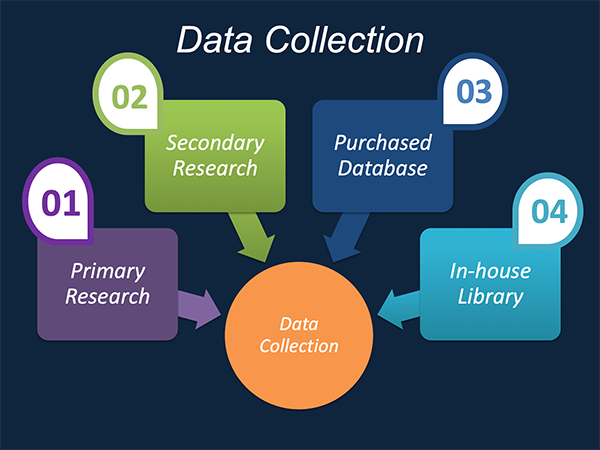
Data Synthesis: This stage includes the evaluation and assessment of all the data acquired from the primary and secondary research. It likewise includes in evaluating the information for any disparity watched while information gathering identified with the market. The data & information is gathered with consideration to the heterogeneity of sources. Scientific and statistical methods are implemented for synthesizing dissimilar information sets and provide the relevant data which is fundamental for formulating strategies. Our organization has broad involvement with information amalgamation where the information goes through different stages:


Market Formulation & Deduction: The last stage includes assigning the data & information in a suitable way in order to derive market size. Analyst reviews and domain based opinions based on holistic approach of market estimation combined with industry investigation additionally features a crucial role in this stage.
This stage includes with the finalization of the market size and numbers that we have gathered from primary and secondary research. With the data & information addition, we ensure that there is no gap in the market information. Market trend analysis is finished by our analysts by utilizing data extrapolation procedures, which give the most ideal figures to the market.
Data Validation: Validation is the most crucial step in the process. Validation & re-validation through scientifically designed technique and process that helps us finalize data-points to be used for final calculations. This stage also involves with the data triangulation process. Data triangulation generally implicates the cross validation and matching the data which has been collected from primary and secondary research methods.





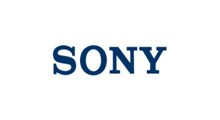

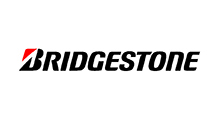

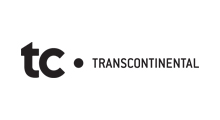















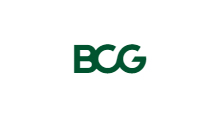


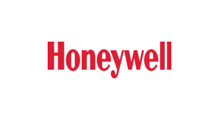

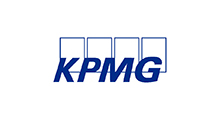
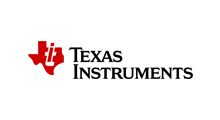



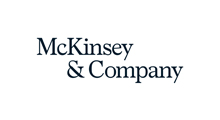

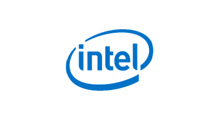







Free Customization
Countries can be added on demand
Free yearly update on purchase of Multi/Corporate User License
Companies served till date

We serve our customers 24x7 for 365 days through calls, emails and live chat options.

Huge database of exceptional market reports bringing market intelligence to your fingertips.

SSL enabled, we offer you various secured payment options for risk free purchase.